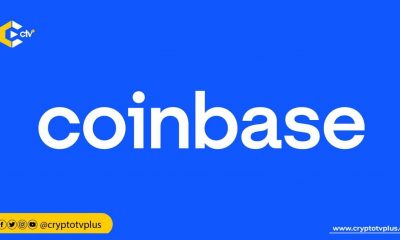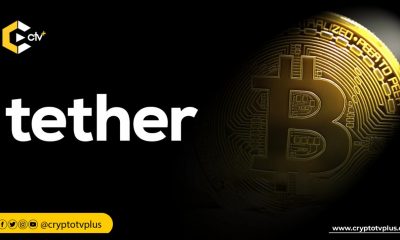Education
Differences between USDT and USDC

Stablecoins are digital currencies that are designed to manage the volatility of cryptos. Because they are pegged to a more stable asset, their value is preserved compared to more volatile cryptocurrencies.
USDT and USDC are stablecoins pegged to the US dollar. There are other types of stablecoins, including fiat-backed, commodity-backed, algorithmic stablecoins and cryptocurrency-backed. The use of stablecoins has increased over the years because of their lower volatility.
Here are the differences between USDT and USDC stablecoins.
Differences between USDT and USDC
USDT as a multichain stablecoin
USDT is a stablecoin, pegged to the dollar, and was launched by Tether Limited Inc in 2014. It was initially released on the Bitcoin blockchain via the Omni Layer protocol but has grown to become native tokens of several other blockchains. These blockchains include Solana, Ethereum, Tron, NEAR, Algorand, Avalanche, Bitcoin Cash’s Simple Ledger Protocol (SLP), EOS, Kusama, Liquid Network, Binance Smart Chain, Polygon, Tezos, and Statemine.
This is why crypto users can see names or tickers like TRC20 USDT (USDT issued on the TRON network), ERC20 USDT (USDT issued on the Ethereum network), OMNI USDT (USDT issued on the Omni network), and BEP 20 USDT (USDT issued on the Binance Smart Chain network).
Understanding the different types of USDT is important to prevent sending a particular USDT type to the wrong network. For example, a user who sends 4,000 Tron USDT to an ERC20 USDT address will lose those assets immediately.
Market data
It has a current market capitalisation of $66 billion, with 3,994,277 different wallets holding it. Out of the number of wallets, the top 50 holders and the top 100 holders have 39.04% and 45.11% of available USDT respectively. USDT is currently audited by BDO Italia.
Litigations
In 2017, the Tether team was subpoenaed by the U.S. Commodity Futures Trading Commission (prosecution) for wrongfully stating that “Every tether is always backed 1-to-1, by traditional currency held in our reserves. So 1 USDT is always equivalent to 1 USD.” This made the firm to change the terms to “Tether Tokens are 100% backed by Tether’s Reserves” which can include third party involvements.
In 2019, another lawsuit against the firm from New York Attorney General Letitia James sued Bitfinex, a cryptocurrency exchange, and Tether for illegally using reserves funds to cover up 850$ million dollar deficit. The case was also linked with Crypto Capital Corp whom the prosecutor said had either lost or stolen monies entrusted to it by Bitfinex, owned by iFinex.
Details of the case also revealed that the funds sent to Crypto Capital Corp from Bitfinex were part of the funds of Crypto Capital Corp that were seized in Portugal and Poland of the same year. Thus, Bitfinex had to borrow $400 million from Tether pending the release of the seized funds in the custody of Crypto Capital Corp.
By February of 2021, iFinex, Tether and Bitfinex, settled the case with the New York’s Attorney General’s office by paying $18.5 million.
Tether was also fined $41.6 million in October 2021, for another inaccurate claim that all its minted USDT was backed by fiat dollars. The truth was that the backing was a combination of several assets which included fiat dollars.
USDC
USDC is another digital dollar that is pegged 1:1 to the dollar. It is designed in a way that each USDC in circulation is backed by 1 USD in reserve. USDC was launched in 2018 by the Centre Consortium made up of Circle and Coinbase.
USDC as a multichain stablecoin
In 2020, an upgrade was initiated on USDC to enhance its usage for payments, commerce, and peer-to-peer transactions. And although it was launched on the Ethereum blockchain as an ERC-20 token, it is now available on several blockchains, including Solana, Stellar, Algorand, Polygon, Hedera, Flow, Tron, and Avalanche.
Market data
Currently, USDC market capitalization is about $45 billion, with 1.5M different wallets holders. Out of the number of wallets, the top 50 holders have 33.78%, while the top 100 holders have 39.83%. GrantThornton currently audits USDC.
Litigations
In September 2021, the US SEC issued a Wells notice, an official way to inform companies about possible lawsuits, to Coinbase in connection with its Lend product. According to Coinbase, the Lend product will allow users earn interest on certain assets on Coinbase including USDC. The Lend product was cancelled because of the lawsuit.
A month later, Circle, the other issuing partner of USDC received a subpoena from SEC to verify its holdings, customer programs and operations. This legal action has also prevented Circle from going public till date.
Closing thoughts
Stablecoins, amongst other importance, are cryptocurrencies that are designed to offer protection for traders as well as investors during market volatility, are not as complex as other cryptocurrencies to understand, and can enhance payments for unbanked individuals.
Read also;
Why every exchange needs to hold stablecoins
Stablecoins; What are they and What Types are there?

























1 Comment